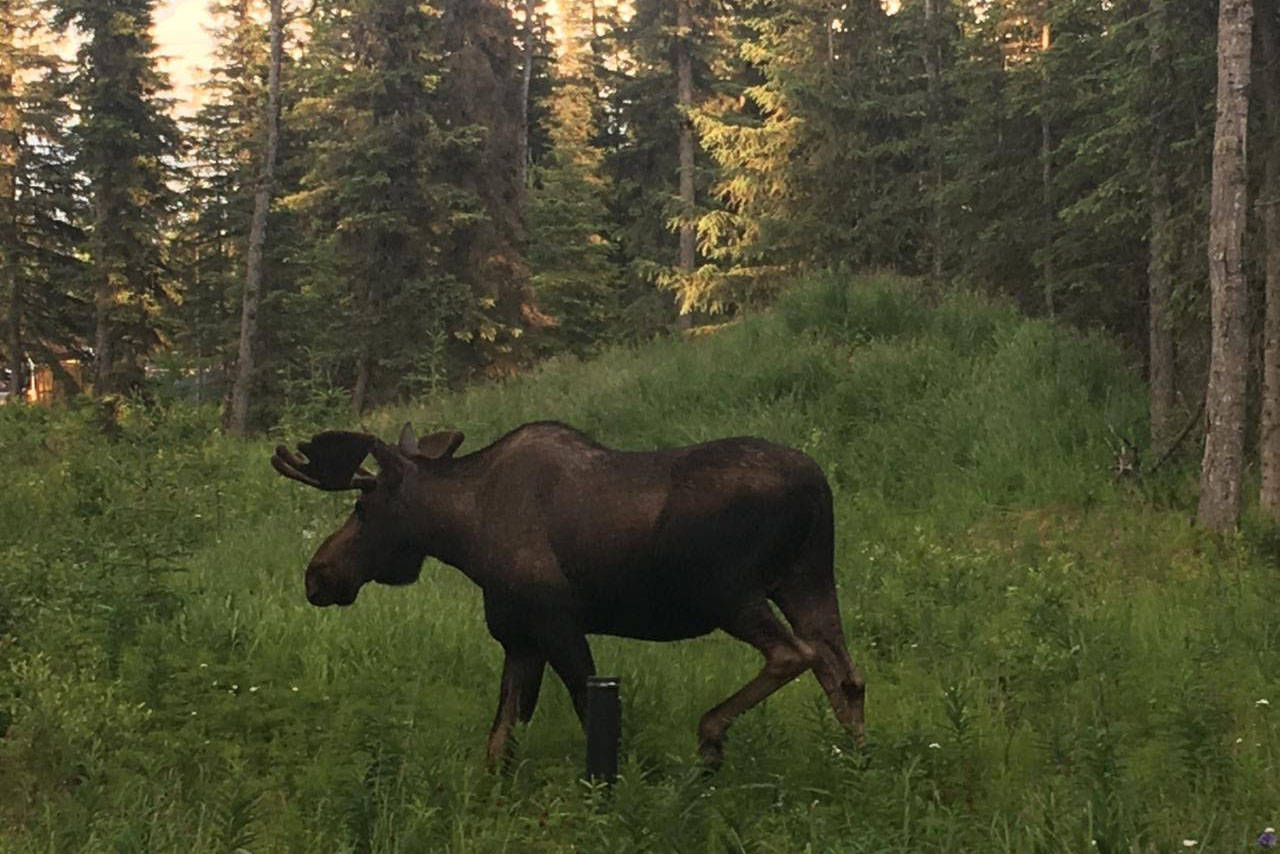The Defenders of Wildlife in Alaska hosted a bear and moose awareness seminar via Zoom on Tuesday night, in an effort to encourage a safe coexistence between Alaskans and wildlife this spring.
Jen Christopherson, Alaska outreach coordinator for the Defenders of Wildlife, said she and her team usually attend educational fairs to discuss wildlife safety in the spring, but had to do it remotely this year because of the ongoing COVID-19 pandemic.
Being aware of a bear’s presence is vital to an individual’s safety, Christopherson said. Hikers and runners should never use headphones, but instead travel in groups with bear bells and make noise.
Jacob Pelham also presented in Tuesday night’s seminar. He is the wildlife technician for the Alaska Department of Fish and Game.
He said besides making noise in the forest, carrying bear spray is the best mode of protection. “Whether you’re going to the post office or running the Mount Marathon,” Pelham said he recommends everyone carry spray.
Christopherson said the Defenders of Wildlife only recommends using a gun as a last resort. “There is only a finite population of Kenai brown bears,” she said.
Bears that come out in the spring are hungry from their winter hibernation. Christopherson said they usually start looking for greens, berries and salmon any time around March and April. Some even eat moose calves.
Pelham said it’s also important to understand an animal’s body language and give them space. Pinned ears and prolonged stares are some indicators of aggressive behavior.
If a moose charges, he said, people should hide behind or under a large object. If a moose knocks someone over, however, Pelham said they should curl up into a ball and stop moving.
Pelham emphasized how dangerous it is to feed moose. Not only is it illegal, but a hungry moose that approaches people looking for food can easily become hostile. “I’d put a star around that one,” he said.
Additionally, Christopherson and Pelham provided information on how to set up electric fences to detract bears from entering an individual’s property.
The Defenders of Wildlife is offering 50% reimbursements of up to $500 for people who use electric fences as a part of its incentive program for the betterment of human-bear coexistence. Reimbursement applications can be found at defenders.org/got-grizzlies.
Additional wildlife safety information can also be found at adfg.alaska.gov.
Reach reporter Camille Botello at camille.botello@peninsulaclarion.com.

